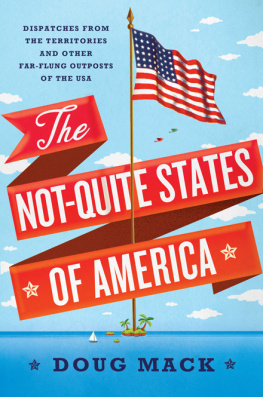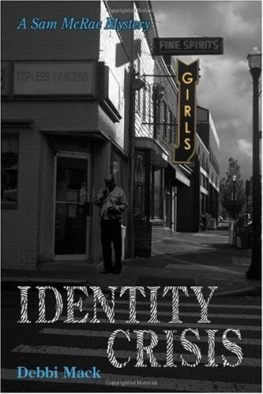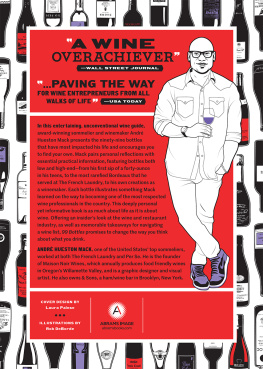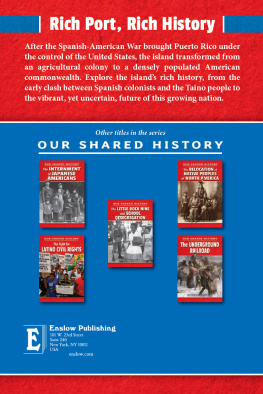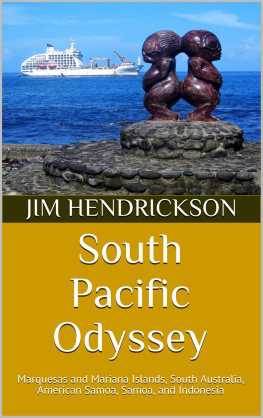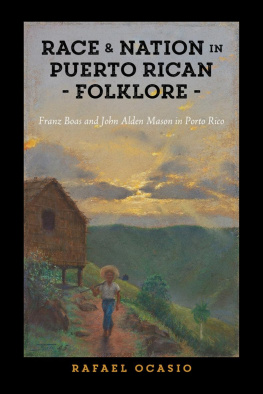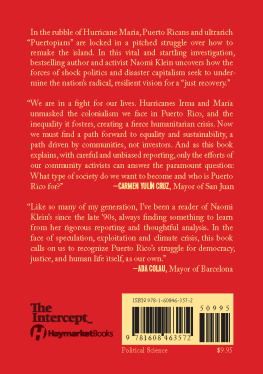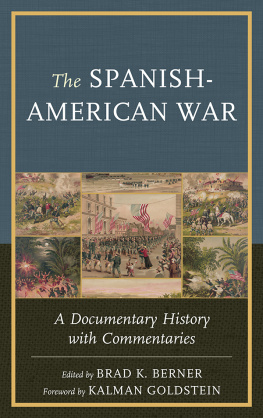

For Maren
THE
NOT-QUITE
STATES
OF AMERICA
Dispatches from
the Territories
and Other
Far-Flung Outposts
of the USA
Doug Mack

W. W. NORTON & COMPANY
Independent Publishers Since 1923
NEW YORK LONDON
Copyright 2017 by Doug Mack
All rights reserved
First Edition
For information about permission to reproduce selections from this book,
write to Permissions, W. W. Norton & Company, Inc.,
500 Fifth Avenue, New York, NY 10110
For information about special discounts for bulk purchases, please contact
W. W. Norton Special Sales at specialsales@wwnorton.com
or 800-233-4830
Book design by Brian Mulligan
Production manager: Louise Mattarelliano
The Library of Congress has cataloged the printed edition as follows:
Names: Mack, Doug, author.
Title: The Not-Quite States of America : Dispatches from the Territories and
Other Far-Flung Outposts of the USA / Doug Mack.
Description: First edition. | New York : W. W. Norton & Company, 2017. |
Includes bibliographical references and index.
Identifiers: LCCN 2016029476 | ISBN 9780393247602 (hardcover)
Subjects: LCSH: Mack, DougTravel. | United StatesTerritories and
possessionsHistory. | United StatesInsular possessionsHistory. |
United StatesTerritories and possessionsDescription and travel. |
United StatesInsular possessionsDescription and travel.
Classification: LCC F965 .M33 2017 | DDC 909/.0971273dc23 LC record available at https://lccn.loc.gov/2016029476
ISBN 978-0-393-24761-9 (e-book)
W. W. Norton & Company, Inc.
500 Fifth Avenue, New York, N.Y. 10110
www.wwnorton.com
W. W. Norton & Company Ltd.
15 Carlisle Street, London W1D 3BS
THE NOT-QUITE STATES
OF AMERICA
A VERY BRIEF NOTE ON
THE TERRITORIES AND
THEIR VARIOUS DESIGNATIONS
BEFORE HITTING THE ROAD, LETS ESTABLISH SOME of the key terms used to categorize the territories:
1. All territories are either organized or unorganized, which has to do with whether or not theyve passed an Organic Act, which is essentially a territorial constitution.
2. The territories are also either incorporated or unincorporated, which describes whether or not a place is considered fully part of (incorporated with) the United States and all of its federal laws. Unincorporated means that some, but not all, of the U.S. Constitution applies, that Congress has ultimate oversight and veto power over everything, and that the place is neither on equal terms with the states nor officially on the path to statehood. All inhabited territories are unincorporated.
Guam and the U.S. Virgin Islands are organized unincorporated territories.
Puerto Rico and the Northern Mariana Islands are officially commonwealths, not territories at alltheoretically, commonwealths have a bit more local autonomy, though theres much debate about the real-world distinction between the two designations. For all practical purposes, commonwealths are just another form of organized unincorporated territories (and so, for the most part, Im using territories as a catch-all term, including the commonwealths).
American Samoa and most Minor Outlying Islands are unorganized, unincorporated territories.
Then theres Palmyra Atoll, which is a thousand miles south of Hawaii, and is unorganized but incorporated. From a legal standpoint, this five-square-mile atoll with no permanent population has more constitutional rights than any inhabited territory. If that seems a bit unexpected, well, were just getting started.
IVE ALWAYS BELIEVED THE DISORIENTING SENSE OF arrival in a new place to be one of the great joys of travel. This, however, was a whole new level of confusion.
On a clear January evening, I had boarded an airplane in Miami and flown across the sea. As we descended from the clouds, well after dark, I gazed down at the capital city, a tight cluster of low buildings and palmy treetops surrounding a broad harbor full of sailboats, their mast lights a swaying constellation against the darkened waters. The urban grid, traced by streetlights, was compact and orderly at the waterfront before tangling into a jumble of narrow lanes marching up a steep wooded hillside. It was one part pastoral tropics, one part humming city; I was instantly smitten.
We landed and taxied to the gate, and I turned on my cell phone to review my instructions from Verizon. All calls would incur international roaming charges, they said, but text messages, emails, and Internet use were all considered domestic. If I was talking, I was abroad; if I was typing, I was still in the United Statesa neat, physics-defying party trick. I texted my wife, Maren, to confirm my safe arrival, then read the headlines on the New York Times website, which automatically redirected me to the international edition. When I clicked over to a local news site, the top stories were about dengue fever fears, the results of a regatta, and an area skier who was making final preparations for the Winter Olympics, where she would represent her tiny-but-proud national team.
I disembarked and instinctively looked for the sign to customs, but there was no customsnot on the way in, though there would be on the way out: paperwork, passport check, the whole gauntlet.
The owner of the guesthouse where I was staying met me at baggage claim, a burly guy named Ronnie Lockhart. He was grizzled and outwardly gruff but with a low-key kindness; think of your stereotype of a retired cop. As we headed into town, I noted that traffic drove on the left, like the British, but the cars were American, with steering wheels on the left. This was a combination I didnt know existed anywhere in the world, and it was a perpetual struggle not to yell out to Ronnie that he was driving on the wrong side of the road.
We wound past branches of Banco Popular and Scotiabank, past a U.S. National Guard recruiting storefront. The buildings were low-slung, with red-tile hipped roofs and large, louvered windows, and every surface fading and peeling in that inevitable tropical way. The streets were called Moravian Highway and Kronprindsens Gade and Espaniol and Rue de Saint-Barthlemy and Main Street. American flags twisted in the breeze outside all the official-looking buildings, but there were also quite a few Danish flags in places of prominence, and flashes of the green-gold-red stripes of Ethiopia on retaining-wall murals and caf awnings. Outside the local cricket grounds, a billboard for a cell phone company showed a player in all-white regalia, with the tagline, No drifters, no yips, no ducks. Basically, straight-up. A couple of blocks later, a well-kept baseball stadium advertised upcoming appearances by Major League stars.
Everywhere, there were signals that I was in my homeland.
Everywhere, there were signals that I was not.
The sign at the airport had read WELCOME TO SAINT THOMAS, US VIRGIN ISLANDS. I was still in the USA, but far from the states.

FROM THIRTEEN original colonies, as every schoolkid knows, the USA has become a nation of fifty proud states. So pleasingly, conclusively round, that number. So tidily those rows of stars fit on the flag, as though geopolitical destiny were dictated by graphic-design convenience. But despite what we advertise on our flag, despite what it says right there in our name, the United States of America is not merely a nation of states but alsolegally and officiallyof those scattered shards of earth and populace that make up our outposts far from the North American continent: the territories of the Virgin Islands of the United States, American Samoa, Guam, the Northern Mariana Islands, and Puerto Rico, along with the uninhabited Minor Outlying Islands.
Next page
